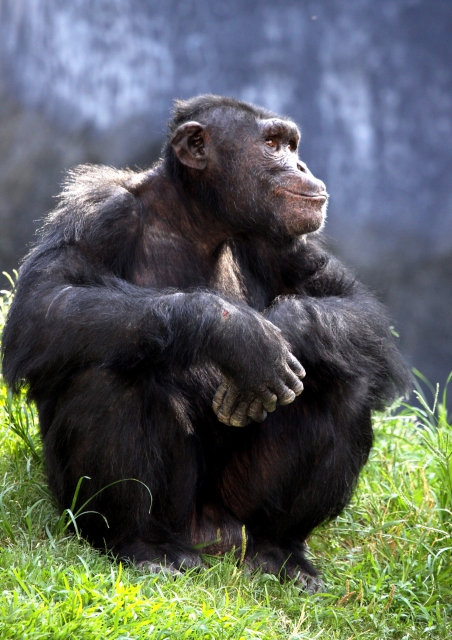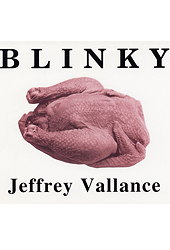Weird Animals - Och Aye The Roo!

Of course, this won’t be news to one member of Britain’s thriving rod-fishing community, who this week caught a piranha in his local pond (Guardian).
Another place you might not expect to see exotic creatures is on your lunch menu, but that didn’t stop one restaurant owner in Mesa, AZ from putting “lion burgers” on the menu to celebrate soccer’s World Cup. Cameron Selogie of the Il Vinaio makes his “mane course” with genuine lion meat imported from South Africa, earning him the ire of local animal rights groups and several death threats, but not a reprimand from health officials. According to an FDA spokesman serving lion meat is perfectly legal, as long as it’s not roar (Scotsman).
Slightly luckier than the lions, one cat who has fallen on his feet is Oscar, a housecat from the Isle of Jersey in the UK, widely billed as the “bionic cat” after successfully receiving two artificial hind legs to replace the ones he lost in an altercation with a combine harvester (BBC News).
You might think pitting a rodent like mammal against a 12 tonne Triceratops makes for an equally one-sided match up, but evidence emerged recently that our primitive ancestors occasionally feasted upon dinosaurs. Seventy-five million year old “gnaw marks” of a kind characteristic of early mammals, and belonging to a creature not much bigger than a squirrel, have been found on the fossil bones both of Tricerotops and the crocodile-like predator Champsosaurus (LiveScience).
Sadly today the nearest we get to dinosaur flesh is turkey or chicken, but not all birds were prized solely for their meat. The huia bird of New Zealand for example, was once used to make the feathered head-dresses of Maori chiefs, until predation from accidentally introduced species drove it to extinction around 1907. But if the bird has gone its feathers have not, and one recently became the most expensive feather ever when it sold at auction for NZ$8000, i.e. $4000 American (Telegraph).
But might we soon go the way of the huia bird? One scientist certainly thinks so, and in less than a hundred years at that. Professor Frank Fenner of the Australian National University, and one of the architects of the campaign to eradicate smallpox, claims that this will most likely be our final century. “Homo sapiens will become extinct, perhaps within 100 years,” Fenner warned, adding “it's an irreversible situation. I think it's too late.” The Canberra Cassandra puts our eventual demise down to overpopulation and overconsumption of the Earth’s resources, along – of course – with climate change (The Statesman).
So is it just our human nature that makes us expand and consume with no thought for tomorrow. Perhaps the answer can be found in our closest animal cousins. It’s long been known that chimpanzees will fight and kill chimps from other groups, often deliberately hunting and cornering their victims, but now a decade long project to monitor chimp groups in the Ngogo Kibale park in Uganda has shown why. It turns out larger groups would target smaller neighbours, whittling down their numbers until they could no longer effectively defend their territory, whereupon the aggressor moved in. The motive seems to be greater access to food, and sometimes females, and the victors seemingly revel in their new territory, using it in preference to their old exhausted range (LiveScience).
And for no other reason than it features two very weird animals, I'll finish be reporting that SyFy are to follow up the success of cult hit Mega Shark versus Giant Octopus with another animal competition laden shlock-fest, Mega Python versus Gateroid. This sort-of sequel will again feature 80s pop-diva Debbie Gibson, as the accidental creator of the giant snake of the title, but this time pits her against a feisty park ranger on a mission to save the Everglades gators, played by non-other than 80s pop-diva Tiffany. Hence the scene is set for a Florida showdown between the two mud-wrestling musical misses, which is the kind of primate-on-primate violence we can all get behind (NY Times).
(Image: Michael Elliott / FreeDigitalPhotos.net)
Comments
uk non indiginous animals- suprised there aren't more problems like the frogs in australia due to no natural predators.
cat prothstetics- pretty cool they could help the poor kitty.
dinos- smaller animals would feed on fallen larger ones, but i doubt the little guys brought the big ones down.
feathers- they are only worth what someone will pay for them.
chimps- not all that suprising as close as they are to us genetically.
sy/fy- new form of the old godzilla vs ??? movies.
great bunch of stuff dumbfounded!
cat prothstetics- pretty cool they could help the poor kitty.
dinos- smaller animals would feed on fallen larger ones, but i doubt the little guys brought the big ones down.
feathers- they are only worth what someone will pay for them.
chimps- not all that suprising as close as they are to us genetically.
sy/fy- new form of the old godzilla vs ??? movies.
great bunch of stuff dumbfounded!
Posted by Patty in Ohio, USA on 06/29/10 at 12:18 AM
To think that someone would pay $4,000 for a feather just tickles me.
Posted by Expat47 in Athens, Greece on 06/29/10 at 03:40 AM
For years I used to think Johnny Cash kept exotic pets. Why else would he sing about having to "walk the lion"? I only found out I was mistaken when I went into a record shop and asked for a copy of his latest single, "Don't Take Your Gnus to Town".
Thing is, not long afterwards Cash started releasing songs called "I Got Stripes", "Mean-eyed Cat" and "Boa Constrictor"...
...So was I right and reality wrong? 😖
Thing is, not long afterwards Cash started releasing songs called "I Got Stripes", "Mean-eyed Cat" and "Boa Constrictor"...
...So was I right and reality wrong? 😖
Posted by Dumbfounded on 07/01/10 at 09:01 AM
the risk you are refering too was proven true in the human animal population as well example- europeans giving blankets to american indians and decimating the indian population with small pox.
Posted by Patty in Ohio, USA on 07/03/10 at 06:29 AM
Commenting is not available in this channel entry.



Category: Aliens | Animals | Dinosaurs and Other Extinct Creatures | Cryptozoology | Food | Overpriced Merchandise | Pets | Cats | Rants, Warnings, Jeremiads, Prophecies and Cassandra-like Figures | Science | Violence | 1980s